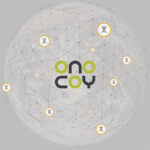
Launched in October, the Dronecode Project brings together existing open
source drone projects and assets under a nonprofit structure governed
by The Linux Foundation, resulting in a common, shared open source
software platform for UAVs.
When Chris
Anderson started the DIY Drones community in 2007, he was a magazine
editor and a dad who knew little about drones, but wanted to learn.
Launched in October, the Dronecode Project brings together existing open
source drone projects and assets under a nonprofit structure governed
by The Linux Foundation, resulting in a common, shared open source
software platform for UAVs.
When Chris
Anderson started the DIY Drones community in 2007, he was a magazine
editor and a dad who knew little about drones, but wanted to learn.
That
community quickly became a place for Anderson and others curious about
drone technology to ask questions and collaborate on projects. Today,
the platform has been adopted by more than 100,000 users, has 60,000
active members and receives as many as two million page views a month.
Anderson, who co-founded 3D Robotics in 2009, never dreamed his blog
would reach this level, but he says that’s the beauty of an open source
community.
A drone software platform that many companies use
today was born from this community, and because of the level of interest
and involvement in both this platform and the community, Anderson
decided it was time to make it official. In October, Anderson partnered
with the Linux Foundation to create The Dronecode Project. Dronecode
brings together existing open source drone projects and assets under a
nonprofit structure governed by the Foundation—resulting in a common,
shared open source software platform for UAVs.
“It wasn’t like I
had this planned back then. I was a dad doing stuff with my kids,”
Anderson said. “This is how all great open source projects start, with
someone dabbling around in their spare time. If it’s a good idea it
attracts more people and spins wildly out of control.”
Dronecode
includes the APM/ArduPilot UAV software platform and associated code,
which until now was hosted by 3D Robotics, as well as the partner PX4
project, led by Lorenz Meier from ETH, the Technical University of
Zurich. More than 1,200 developers are part of Dronecode, and there are
more than 150 code commits a day on some projects. Skycatch,
DroneDeploy, HobbyKing, Horizon Ag, PrecisionHawk, Agribotix, and
Walkera are among the companies that have adopted the platform.
Founding
members of Dronecode, which encompasses projects that control flight,
enable mission planning, and simply make drone flight and advanced
functionality possible, include Baidu, Box, DroneDeploy, Intel, jDrones,
Laser Navigation, Qualcomm, SkyWard, Squadrone System, Walkera and
Yuneec.
“The formed communities and established projects have
been underway for years. Now they’ve just been folded into Linux under
Dronecode,” Anderson said. “We’re creating a formal structure and
membership for companies participating. We reached the maturity point
where we wanted to set up a membership structure.”
The new
structure will make it easier for people to contribute, Anderson said.
Various membership types are available, and foundation members get a say
in the direction the project goes. Members can contribute money or
engineers to the project, and while those engineers are focused on that
member’s needs, whatever work they do is shared with the community.
“Each
one of us does what’s right for our company, but we give back to the
community so it collectively effects the entire project,” Anderson said.
You don’t have to be a member of Dronecode to use the
software, just to participate in projects. But those who are members get
to contribute to the future of UAV flight. The brilliant minds and
collaborative spirit Dronecode community members possess will only serve
to advance UAV technology, and Anderson expects that open-source
development to unite the industry and lead to a platform like no other.
“The
goal is to build a robust ecosystem of companies, universities and
individuals who are collectively building something that becomes the
dominant drone platform,” Anderson said.
If you want to become part of that group, or simply want to learn more, visit <dronecode.org>.




